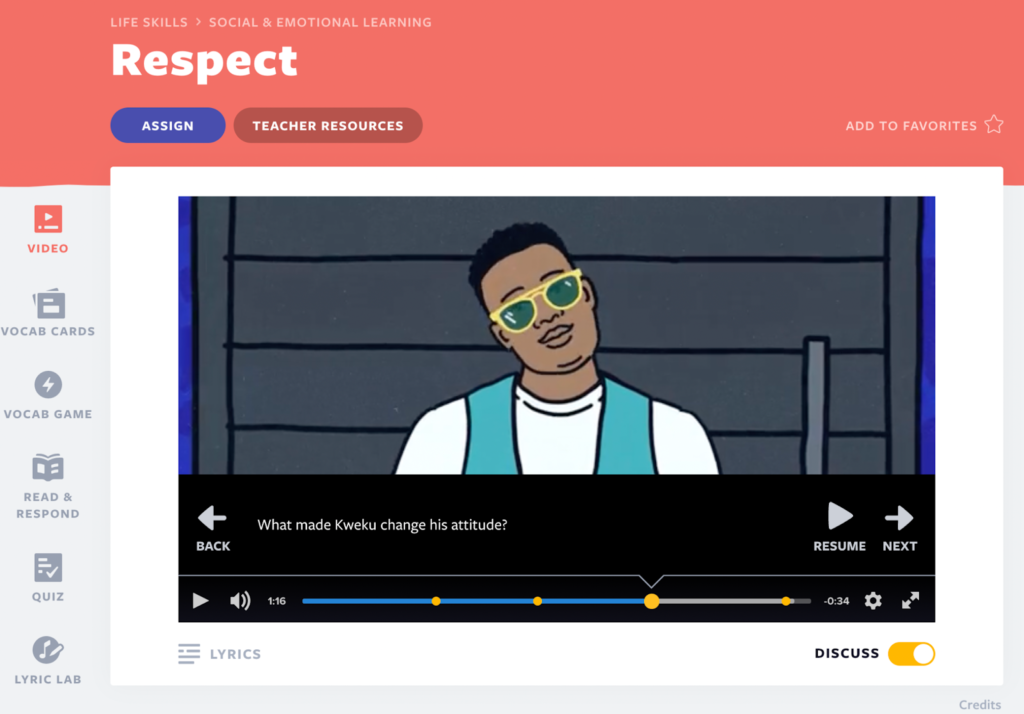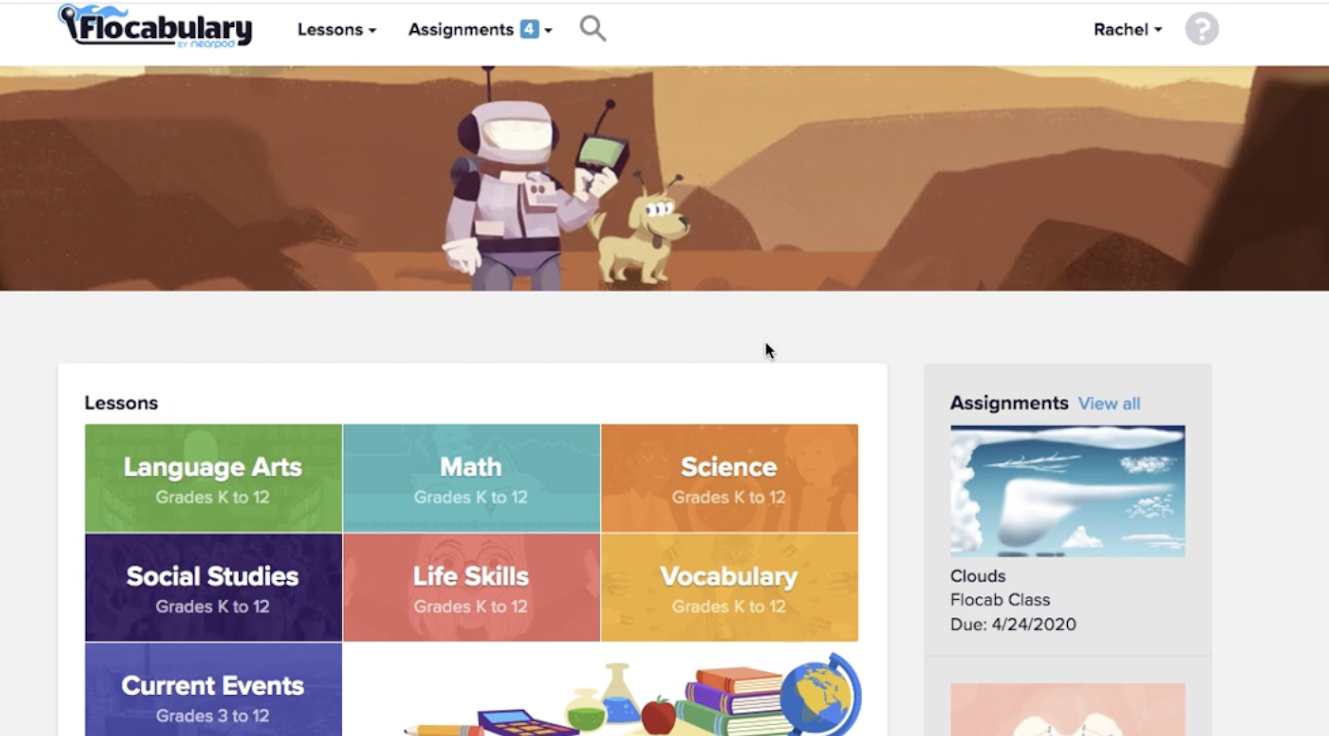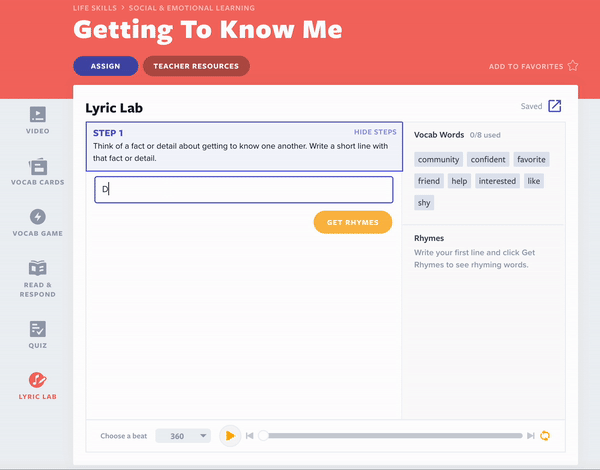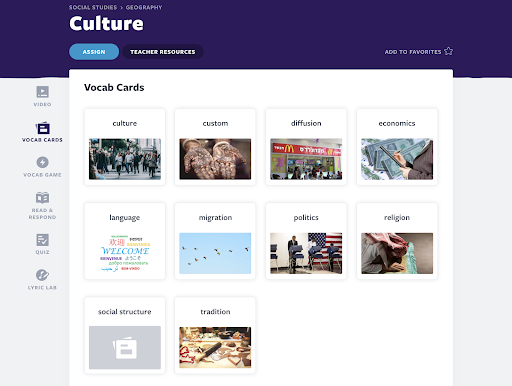
3 Ways to plan back to school activities with Flocabulary
Back to school is the perfect time to introduce Flocabulary in your classroom. Many teachers spend time at the beginning of the school year building their classroom community and establishing classroom expectations and norms. Why not bring Flocabulary into the mix? Whether you’re using Flocab for whole group activities, providing time for small group conversations, or giving the students a chance to independently explore the website, Flocabulary helps students feel connected to the content while also igniting conversations to help the class get to know each other. Let’s look at three ways that Flocabulary can play a part in your back to school activities and lesson videos!
3 Ways to plan back to school activities with Flocabulary
1. Build connections with SEL lessons and Discuss Mode
When thinking about the beginning of the school year, classroom culture and community always play a big part. Flocabulary has lessons that can help you and your students build connections and facilitate conversations to help establish the type of learning environment you hope to build.

You might start with one of the Social & Emotional Learning lessons to watch as a class. Watch it straight through the first time, then turn on Discuss Mode to allow students to dig deeper into the topics to learn about their classmates. This would be a great opportunity to also set norms for classroom conversations.
2. Watch videos that spark student interest
The beginning of the school year is the perfect time to start getting to know your students. It’s important to use back to school activities and video lessons that spark their interest and gets them excited to learn.

Students can use Flocabulary for self-directed learning, where they can search for videos on topics that interest them. Provide some time for students to explore the website (on their own, with partners, or in small groups). Ask them to look for videos that ignite their curiosity, then have a reflection session where they share what they found. This is a great way to learn about who your students are and can provide you with ideas about topics you could weave into your classroom to motivate and engage your group throughout the year. It can also help students find others with common interests to strengthen their classroom community.
3. Get to know each other through Lyric Lab

Flocabulary’s Lyric Lab activity can be a fun way to allow students to get to know each other. With elementary students, you might do an interactive writing piece together around the Getting to Know Me video. Watch the video as a class, and then model doing the Lyric Lab together to share a couple facts about you as the teacher. Then break students into small groups. Have each student in the group come up with two lines to introduce themselves to the class, using the Lyric Lab to help them come up with rhymes. Then have them choose a beat at the bottom of the Lyric Lab and come up with a creative way to share their group’s facts. Have fun listening to your students share their rhymes while getting to know their classmates!

For older students, you could incorporate similar back to school activities using the Culture video. Give students an opportunity to share parts of their culture that make them special while also helping the class learn the value of diversity. This is a great culture-building activity for your classroom. You could even customize the Vocab Cards activity and have students complete sentences and draw pictures for each of the lesson’s vocabulary words with a sentence and picture related to themselves. Want to kick it up a notch? Have students take screenshots of their Vocab Cards, combine that with the Lyric Lab they created, and do some app-smashing to create a music video.
Start off back to school with the power of Flocabulary
The first days of the school year play a critical role in setting up your classroom community. Flocabulary’s engaging back to school activities and videos can help spark those important conversations that build relationships with and among your students. And allowing students to explore the content and create meaningful resources to share their interests will allow teachers to get to know students beyond just their test scores, hopefully leading to more meaningful learning experiences throughout the school year. What are you waiting for? Find a lesson that you can use to build classroom community and get to know your students.
